
Unique, super-functional or just plain lovable - Dan Bailey has a close look at four bits of kit that stand the test of time, the Scarpa SL Activ walking boot, Mammut Base Jump Advanced trousers, Rab's Vapour-rise Jacket and the Pacerpole walking pole. What gear would you nominate for 'classic' status?
The outdoor equipment trade is a dynamic market, fuelled by a steady turnover of new products. Whether it's a straightforward switch from one season's colour scheme to the next or the innovation of a genuinely novel idea, change is a defining characteristic. Without it trade shows would be empty, and our gear cupboards too. Yet within this stream of the new stand islands of relative continuity. As the Cafetiere is to coffee makers, some outdoor products simply do their job so well in the first place that they hardly need updating. Others are more like a VW Golf, passing through a series of evolutionary refinements over years or even decades while still retaining a core identity that remains true to the original.

So what makes a timeless classic of kit design? I'm not sure it can be easily summed up. A classic must perfectly fit its niche, certainly, and as with all the best design every aspect of form should contribute to function. Perhaps it's an original, doing its thing in a quirky way that nothing else quite matches? Or maybe it's stripped-down simple, solidly dependable or, ultimately, just plain likeable? Everyone has their own particular favourites, and we could happily publish a whole series on the subject. For now, here are four of mine: a mountain boot with decades-long pedigree; an unorthodox take on the softshell concept; a walking pole unlike any other; and a pair of trousers that just quietly gets on with the job, year-round.
Scarpa SL Activ
The Scarpa SL is 30 this year, having first hit the shelves way back in 1983. It was initially designed with the UK market in mind, and having sold upwards of 120,000 pairs in Britain alone, and consistently ranked in the top five sellers here, Scarpa has clearly been doing something right. This benchmark 3-4 season boot is ideally adapted to the rough, wet rigours of the British uplands, and with their B1 rating they'll take a strap-on crampon for the crossover into winter hillwalking or Alpine trekking too. Various tweaks were made over the years - new sole units, better lace eyelets, the introduction of a women's model in 1996. Its current iteration, the 2011 SL Activ, boasts a number of up-to-date refinements: 360-degree ankle flex inspired by Scarpa's Cumbre; a businesslike rand; and the brilliant new ActivFit BD Last. It is a hillwalking boot that's almost as old as the hills, and yet despite a gradual evolution the basic fundamentals haven't changed in all that time; top notch materials and workmanship, and a design that does exactly what's needed.
'Looking back through the timeline of the SL, it's amazing to think that this boot spans three decades of existence' says Steve Roberts, Scarpa's UK Managing Director and part of their global R&D team.
'It has been a privilege to have been able to work with Scarpa and continue the evolution of such a benchmark product within the industry. Crucially like the very best car designs the original concept and values remain today and in a world of dumbed down and extreme lightweight footwear trends the SL continues to stand the test of time. It is a true modern-classic.'
He would say that of course. But then it's hard to disagree; lightweight the SL Activ sure isn't, but its enduring quality lifts it into classic status.
A dependable favourite, fully up to date and built to last
Firstly and to my mind most importantly, the SL is one of a mere handful of all-leather-upper boots to come without a waterproof membrane lining. Perhaps your feet never sweat but on me, in anything less than full winter conditions, leather footwear with a membrane tends to be hot and sticky. Not so the SL Active, which I've found consistently one of the most comfortable and breathable boots in its class. A membrane would simply be redundant here, thanks to the quality of the HS12 leather, which has undergone a spacial tanning process to make it more resistant to wetting out. With a one-piece tongue and little external detailing there's also minimal stitching lower down on the upper through which water might penetrate, and having ploughed through plenty of bogs, burns and snowdrifts I've yet to suffer a drop of unwanted dampness. I don't even mind having to look after these boots with periodic re-proofing, since all quality leather needs care and giving it (the leather) a good rub is a satisfyingly tactile experience.
Despite its weight and relative stiffness underfoot the SL Activ feels surprisingly nimble and un-clumpy. I've found this great for precise footwork when scrambling, and just generally feeling less tired at the end of a long day too. The supple cut-out collar plays a role in this nimbleness, permitting a better range of ankle movement than is typical on a traditional all-leather boot without noticeably compromising support on rough ground. 'Memory foam' in the ankle padding holds the heel securely still, yet its softness, and the lack of a really aggressive heel cup, are easy on the Achilles (a sore point for me at present). On Scarpa's website the SL Activ comes with a baffling (and badly explained) collection of proprietary technologies and acronyms, not least of which is the ActivFit BD Last. But they can call it what they like, given how snugly it holds the foot in position, while at the same time offering plenty of width and volume at the toe. If, like me, you've in the past found the Scarpa fit a little narrow at the front then give the SL Activ a try – you might be pleasantly surprised.
Down below, the composite Vibram 'Biometric' sole is just the thing for big days on tough terrain, giving a good compromise between foot-friendly flex and supportive stiffness. There's plenty of shock absorption but not so much height in the sole that you feel you're walking on platforms; the sole also offers a nice natural roll of the foot, and excellent traction on a variety of surfaces from wet grass to wet rock. The little extra-grippy climbing zone at the toe is just the thing for scrambling, while the sole's self-cleaning grooves actually seem to work too, reducing the ball-up of mud or wet snow underfoot.
In conclusion: a dependable favourite among hillwalking boots, brought fully up to date in its latest version - and built to last.
Rab Vapour-rise Jacket
I've long been a fan of Rab's Vapour-rise system, and have VR Jackets of three different vintages sitting on my desk as I write this. From 2006-2012 I practically lived in an earlier version of the jacket, using it for everything from cragging and summer hillwalking to winter mountaineering. I've still failed to put a hole in it. A versatile on-the-move sort of animal, it's been up an Alp or two, and served as the key part of my layering system on a trip to Africa's 5000m peaks. I've even worn it to the cinema. So I was pleased to begin a review of a more up to date model in autumn 2012. This replaced its predecessor as a hillwalking and climbing staple, and performs just as well. In today's fast-moving outdoor market a test that's lasted for over half a year runs an obvious risk, and right on cue Rab brought out a new Vapour-rise Jacket for 2013. I've now got my hands on the latest version, and it's interesting to note the gradual refinements in the design over the years; more on that in a bit. Firstly, what is it?
Wicks effortlessly across a range of weather and temperatures, and it's particularly effective when you're working hard
Vapour-rise is an unusual twist on the soft shell concept, marrying a light Pertex Equilibrium outer with a thin micro-pile inner to create a composite garment that manages moisture extremely effectively, and helps maintain a stable micro climate inside. The principle is simple; the inner wicks moisture away from the body, and the outer then sucks it onto the exterior of the garment for easy evaporation. I'll let Rab explain how:
'Pertex Equilibrium has a unique 'denier gradient' structure' they say.
'It combines two different yarns with different properties. On the inside you'll find a yarn with larger filaments, on the outside a yarn with smaller filaments. Following the laws of capillary action, moisture will move from larger filaments to smaller filaments.'
'The engine behind this process is your own body heat. On the outside the smaller filaments have a relatively high surface area which causes the excessive moisture to evaporate quickly. Through evaporative heat loss Equilibrium reduces overheating, which in return reduces excessive sweating. This process creates body temperature equilibrium. The raised yarns on the inside ...create a micro-climate between the skin and fabric. This prevents the fabrics from sticking to the skin during intense activity. It also supports the moisture movement process.'
Come rain, shine, warmth or cold, I've found it wicks effortlessly across a range of weather and temperatures, and it's particularly effective when you're working hard. In addition the pile lining gives good insulation for its fairly minimal weight, while the DWR-treated outer shrugs off light rain or snow, and keeps out quite a breeze. The jacket is designed to be worn next to the skin, but I generally pair it with a base layer. With that combination I only tend to need an additional (warm or waterproof) layer when stationary in winter weather, or if it's properly raining.
First developed in the 1980s, Vapour-rise gradually built a loyal following, but didn't achieve the sort of mass popularity that it arguably deserved. Perhaps the original heavier fabrics and the presence of a drop liner made the jackets look a bit clumsy, giving them little 'hanger appeal' in store. The more recent attention to tailoring and the use of lighter, brighter-coloured fabrics is positive. But VR garments remain, first and foremost, functional, with useful pocket configurations, roomy wired hoods, hem drawcords and simple wrist cuffs. There's nothing extraneous here.
Vapour-rise is not the only system to have combined a shell-like outer and microfleece inner – I've an old Mountain Equipment jacket that works on similar principles – but Rab have really run with the concept, and now offer a number of garments in the range. In addition to the standard Vapour-rise Jacket reviewed here there are the thicker winter-fied Vapour-rise Guide, the thinner summer-oriented Vapour-rise Lite (jacket, pull-on and vest), a wee Stretch Top and a couple of weights of trouser. Most come in both men's and women's versions.
So how does the 2013 Vapour-rise Jacket compare to its ancestors? Given how well the older version already worked, the tweaks are thankfully all for the good. Both the 2006 jacket and last year's review model feature detachable hoods which can also be rolled away into the collar. The precise arrangement for this has changed over time, and I found last year's a little cumbersome. For 2013 Rab have done away with the collar flap altogether, leaving a simple (and non-detachable) hood that can either be worn overhead or rolled down around the neck to become a snug collar in its own right. With their wired peaks and protective feel the previous hoods were always typical Rab, but the latest version is roomier and better cut for use with a helmet. It has also gained a volume adjuster. The three-pocket arrangement has persisted over time, with two zipped hand pockets and a single Napoleon-style chest pocket. This is plenty of storage space, particularly since the Napoleon pocket has gradually expanded. In 2013 this retains its original mesh lining for ventilation, while the lower pockets have now gone from mesh to pile lining for hand warming comfort. The loss of ventilation here is compensated by the addition of two-way pit zips, an all-new development this year and one that makes the standard weight VR Jacket better suited to summer weather. Honourable mention too to this year's low-bulk cuffs, where the pile lining ends just above the wrist to give a closer and less obtrusive fit. The new features come with a very minor weight penalty, and the jacket has put on about 60g between 2006 and 2013. I only wish I'd gained as little. Maturity has improved its looks however (I can relate), with brighter fabrics and smart two-tone zips.
The Vapour-rise concept is as effective as it has always been, while thanks to some key refinements the VR Jacket itself is better than ever. As a softshell for hard working use in our typically damp climate it still takes some beating after all these years.
Mammut Base Jump Advanced Pants
'When we first introduced the Base Jump Pants we had no idea that they would gain such a following' says Oliver Walker of the Mammut design team.
'The key to their success is the simplicity of their design and key features, and customers love them because they perform.'
Base Jump Pants [sic] are hugely popular general purpose mountain legwear, suited to both hillwalkers and climbers and just as at home in the Alps as the UK. They've been around since 2008, and were, say Mammut, among the first of the new breed of slim-fit, lightweight technical softshell legwear. Though they're an apparently simple garment, in use you soon see that every feature is there for a reason. Since I started this review (autumn '12) an updated version has come out, the Base Jump Advanced II; as a testament to a sound original design most changes are fairly minor (better pocket positions, a slightly altered waist band); but there is one biggie, the introduction of a UV-protective 'Coldblack' finish that, says Mammut, keeps dark fabrics as cool as lighter ones in the sun. I've not had a chance to put this to the test.
Hugely popular general purpose mountain legwear, suited to both hillwalkers and climbers
The Base Jumps' Schoeller 3XDry fabric is an ideal softshell material, repelling a measure of water from outside and transporting moisture outwards from within. On a drizzly day they are adequate alone, but in common with all softshells they need the added protection of overtrousers once the rain starts in earnest. The fabric is quick-drying, warm for its weight, durable, and stretchy for good freedom of movement. In use the wind resistance is excellent without compromising breathability, while the fabric's medium thickness suits a wide weather and temperature range. Paired up with long johns I've used the Base Jumps on around 10 winter mountaineering days in the past season, and though I'm admittedly a fair weather climber they've seen their share of wind, snow and long cold belay waits. Yet they've been equally comfortable in warm, windless autumn sunshine too, and if this turns out to be a typical Scottish summer then I'll doubtless go on wearing them right through. That'd go double if mine were the Coldblack-boosted Base Jump Advanced II, which should be even better suited to year-round use.

The cut is fairly slim, neither skinny jean-tight nor ragamuffin-baggy, with a curved leg seam for unrestricted leg-lift without excess material. With both a zip and a Velcro tab, the ankle cuffs can be opened wide enough to put the trousers on while wearing shoes, then cinched tight around the boot to fit neatly under gaiters or keep the trouser leg out of easy range of crampon spikes. But should you be clumsy enough to snag a point regardless then the reinforced ankle patch ought to bear the brunt. Further reinforcement protects the seat from scuffing, though in my case it might be better employed at the knee, and as I'm no fan of the two-tone effect I rather wish it was the same colour as the rest of the fabric.
Other features are thankfully fairly limited: a zipped pocket at each hip, a roomy pocket on one leg and another one at the rear – all with light mesh lining for ventilation and faster drying. The part-elasticated waistband has a sewn-in sweat-absorbing strip, and plenty of belt loops (sometimes it's the small touches that count). There's nothing flash or over the top here, just simple functionality. Ultimately my Base Jump Advanced Pants are just plain comfortable – a fundamental requirement of any classic bit of outdoor clothing. The price is certainly quite high for a softshell trouser, but the fit and features make up for it.
Pacerpole Carbon Shaft
'I often wondered on my winter Munro round how on earth I managed the Summer Munro round without Pacerpoles' says Steve Perry, first person to complete a continuous on-foot Munro bagging mission in winter – having already done them all in a one-er in summer (see this UKH interview).
'It isn't the statistics of weight taken off your knees per mile that impresses me, it's the speed of movement and the distance you can cover with them.'
A step change in walking pole development, with an appearance and performance all its own
The UK-designed Pacerpole represents a step change in walking pole development, with an appearance and performance all its own. It even has to be handled differently to a normal pole. Luckily there are tuition videos on the company's website. Indeed:
'Pacerpoles are not only a product but part of an education process to learn how to integrate them as part of our body structure to maximise walking performance' says physiotherapist Heather Rhodes, co-founder of the husband-and-wife company.
Improving walking performance is primarily a body – related problem, Heather explains, and fundamentally needs a biomechanical solution rather than an engineering one.
While they do of course help with balance and reducing strain on the knees, conventional walking pole designs that draw on the traditional ski pole fail to get the most out of the body, says Heather. Because the grip position pushes the wrist back unnaturally, they rely for best results on the use of a wrist strap; but this in turn introduces a sloppy lateral movement that boils down to wasted effort. The tendency too is to reach forwards with each pole placement to almost pull yourself along, leading to a hunched posture and more squandered energy.
Not so with Pacerpoles. The difference is their unique sea shell-esque left- and right-handed moulded plastic handles, which are steeply angled to give maximum arm leverage at minimum effort. Conforming to the wrist's natural resting posture, the handles are gripped without cocking the wrist, and the poles can be controlled and placed very precisely with only a very light touch; yet the wide ledge on which the thumb and the heel of the palm sit enables a big downward push with every stroke, effectively propelling the body forwards. No other handle design harnesses upper body power so efficiently, turning the arms into something approaching an extra pair of legs. Used correctly – arms at the sides and hingeing from the elbow, pole tips pointing back - the pole promotes an upright posture that allows the ribcage to fully expand for easier breathing. The technique takes time to master, but when it's done right the feeling of smooth, flowing power is quite striking. Having used them regularly for several years I'm convinced Pacerpoles really work.
Below the handle the Pacerpole looks like any other high-end pole. There's a three-section telescopic body, a little neoprene sleeve on the upper shaft for a lower hand grip (if traversing a slope with one pole in the uphill hand for instance), a changeable basket (snow baskets included) and a tungsten carbide tip. There's no conventional wrist strap – the pole doesn't need one for reasons already outlined – but there is an elastic wrist tether in case you drop a pole on steep ground (I've never used it, and should just cut it off). The expanding bolt 'twistlock' locking mechanism will be familiar to most pole users, and while some prefer an external catch arrangement these are not without their own drawbacks. Very occasionally the Pacerpole's lock will slip or seize, but in six or seven years of weekly use I could probably count the times that's happened to me. A longer, stronger and rather heavier alloy shafted model is also available, but unless you're off on an expedition with no chance of replacing a broken section then the lightweight carbon model gets my vote.
But hang on. If they're so good then why don't you see them on every hill?
The Pacerpole was dreamed up in 1994, but technical problems kept them off the market for years.
'The handles were initially produced using a 'cold mould' process' recalls Heather Rhodes. 'The material options were limited, and even though the handle contours were perfect in profile their edges would chip if dropped on something hard.'
Despite having no background in the trade Heather and partner Alan took on the development of the product themselves, solving the handle issue and eventually bringing it to the market in 2001. But Pacerpole remains something of a cottage industry, still relying on word of mouth and the occasional celebrity endorsement from names such as McNeish and Bonington. Though the product is only available on the company website, the regular rave reviews that it gets in outdoor mags (and here, I guess) confirm the classic status of that weird-looking handle design.

About the author
UKHillwalking Editor Dan Bailey spends as much time as he can get away with up Scottish mountains. In lieu of a real job he produces words and pictures on the great outdoors, particularly hillwalking, scrambling and grand old traditional climbs (being too much of a punter to get up any other sort). He is a regular contributor to print and online media, and the author of several guidebooks including Great Mountain Days in Scotland, Scotland's Mountain Ridges and The Ridges of England, Wales and Ireland. He goes through a hell of a lot of outdoor gear, and actually enjoys writing about it. Which is lucky.
- REVIEW: Rab Nitron 25L Pack 22 Aug
- INTERVIEW: James Gibson on the Martin Moran Round Record 18 Aug
- REVIEW: Montane Terra and Jetstream Shorts 5 Aug
- REVIEW: Rab Downpour Trail Lite and Phantom - ultralight shells for runners and backpackers 29 Jul
- REVIEW: Upland by Ian Crofton 30 Jun
- REVIEW: Rab Trail Tee 23 Jun
- REVIEW: Lorpen T3 Trail Running Eco Socks 10 Jun
- REVIEW: Sea to Summit Airlite Towel 30 May
- REVIEW: Primus Ulti Stove System - Finally, a rival to the Reactor? 12 May
- REVIEW: Black Diamond Pursuit Carbon Z Poles 29 Apr



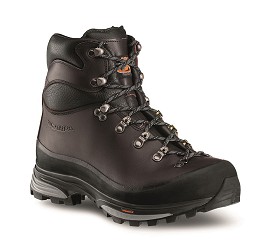

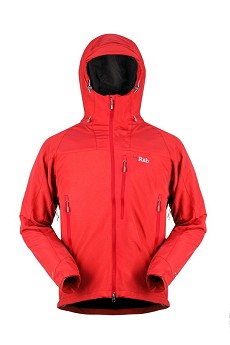


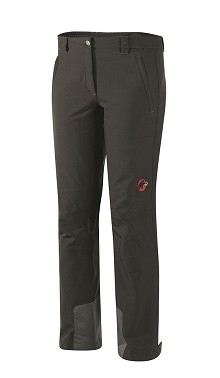


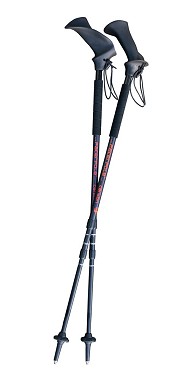




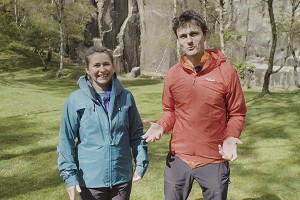









Comments